Manxiu Cui
Neural Fields for Adaptive Photoacoustic Computed Tomography
Sep 17, 2024

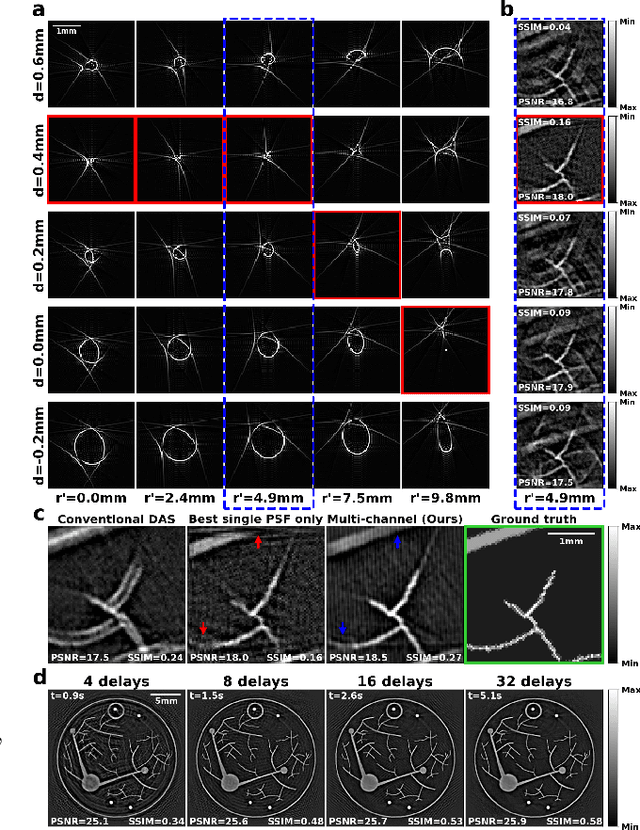
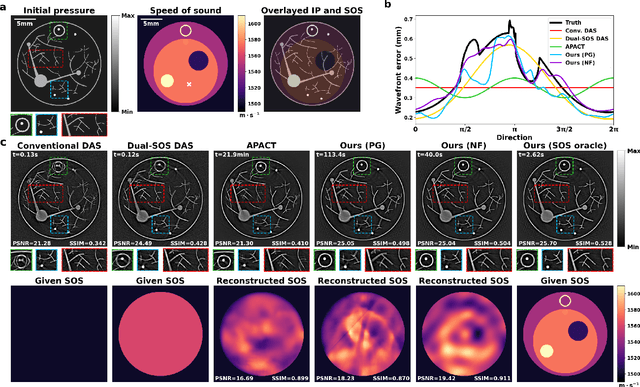
Abstract:Photoacoustic computed tomography (PACT) is a non-invasive imaging modality with wide medical applications. Conventional PACT image reconstruction algorithms suffer from wavefront distortion caused by the heterogeneous speed of sound (SOS) in tissue, which leads to image degradation. Accounting for these effects improves image quality, but measuring the SOS distribution is experimentally expensive. An alternative approach is to perform joint reconstruction of the initial pressure image and SOS using only the PA signals. Existing joint reconstruction methods come with limitations: high computational cost, inability to directly recover SOS, and reliance on inaccurate simplifying assumptions. Implicit neural representation, or neural fields, is an emerging technique in computer vision to learn an efficient and continuous representation of physical fields with a coordinate-based neural network. In this work, we introduce NF-APACT, an efficient self-supervised framework utilizing neural fields to estimate the SOS in service of an accurate and robust multi-channel deconvolution. Our method removes SOS aberrations an order of magnitude faster and more accurately than existing methods. We demonstrate the success of our method on a novel numerical phantom as well as an experimentally collected phantom and in vivo data. Our code and numerical phantom are available at https://github.com/Lukeli0425/NF-APACT.
Score-Based Diffusion Models for Photoacoustic Tomography Image Reconstruction
Mar 30, 2024



Abstract:Photoacoustic tomography (PAT) is a rapidly-evolving medical imaging modality that combines optical absorption contrast with ultrasound imaging depth. One challenge in PAT is image reconstruction with inadequate acoustic signals due to limited sensor coverage or due to the density of the transducer array. Such cases call for solving an ill-posed inverse reconstruction problem. In this work, we use score-based diffusion models to solve the inverse problem of reconstructing an image from limited PAT measurements. The proposed approach allows us to incorporate an expressive prior learned by a diffusion model on simulated vessel structures while still being robust to varying transducer sparsity conditions.
* 5 pages
Single-shot 3D photoacoustic computed tomography with a densely packed array for transcranial functional imaging
Jun 26, 2023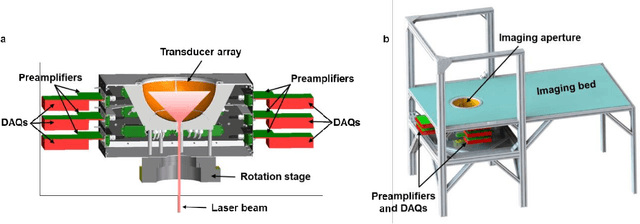

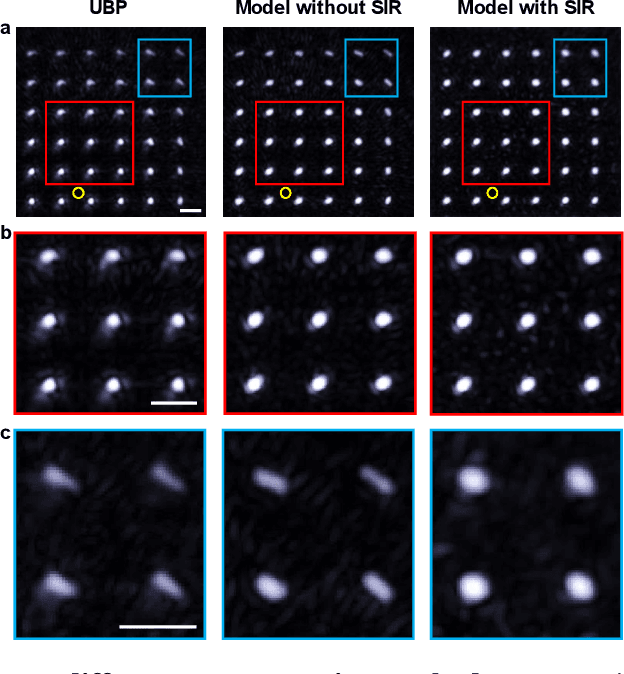
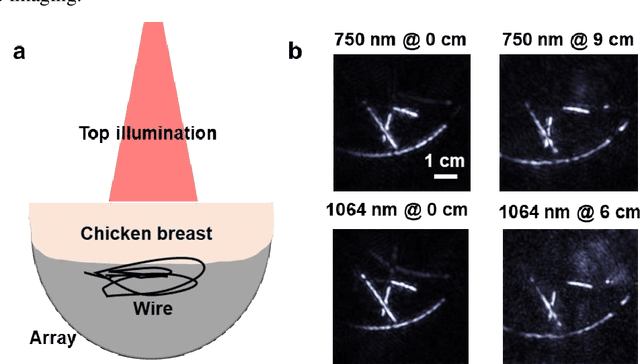
Abstract:Photoacoustic computed tomography (PACT) is emerging as a new technique for functional brain imaging, primarily due to its capabilities in label-free hemodynamic imaging. Despite its potential, the transcranial application of PACT has encountered hurdles, such as acoustic attenuations and distortions by the skull and limited light penetration through the skull. To overcome these challenges, we have engineered a PACT system that features a densely packed hemispherical ultrasonic transducer array with 3072 channels, operating at a central frequency of 1 MHz. This system allows for single-shot 3D imaging at a rate equal to the laser repetition rate, such as 20 Hz. We have achieved a single-shot light penetration depth of approximately 9 cm in chicken breast tissue utilizing a 750 nm laser (withstanding 3295-fold light attenuation and still retaining an SNR of 74) and successfully performed transcranial imaging through an ex vivo human skull using a 1064 nm laser. Moreover, we have proven the capacity of our system to perform single-shot 3D PACT imaging in both tissue phantoms and human subjects. These results suggest that our PACT system is poised to unlock potential for real-time, in vivo transcranial functional imaging in humans.
 Add to Chrome
Add to Chrome Add to Firefox
Add to Firefox Add to Edge
Add to Edge